This post may contain affiliate links, including those from Amazon Associates. If you make a purchase through these links, I may earn a commission at no additional cost to you. Learn more about our affiliate policy.
Some days, the house feels like it’s asking too much. Surfaces stacked with things you barely notice, rooms that hold the hum of tasks instead of calm. The idea of creating a slow living home can feel distant, as if it requires an overhaul you don’t have the energy for.
But what if the shift began with a single room?
Slow living isn’t about rushing to get somewhere new. It’s about starting where you are, shaping one space at a time until your home feels like it’s finally breathing with you.
This approach, room by room, allows you to make steady edits that build into a sanctuary.
Each room becomes a rhythm, a place where your nervous system can settle. With time, the whole home carries that same sense of spaciousness and calm.
Why Room by Room Matters
It’s tempting to think of slow living as a whole-house transformation.
But when you try to do everything at once, the pressure builds and little changes stick. Moving one room at a time is gentler. It lets you pause and notice what truly works before carrying that lesson into the next space.
There’s also a practical rhythm here. A single room can be refreshed in an afternoon, or even an hour.
You begin to feel results quickly, which creates momentum. Instead of facing a looming project, you have a path that feels doable and sustaining.
At its core, this is the same principle that guides slow living itself: less hurry, more presence. By taking each room slowly, you’re shaping a home that grows with you instead of rushing ahead.
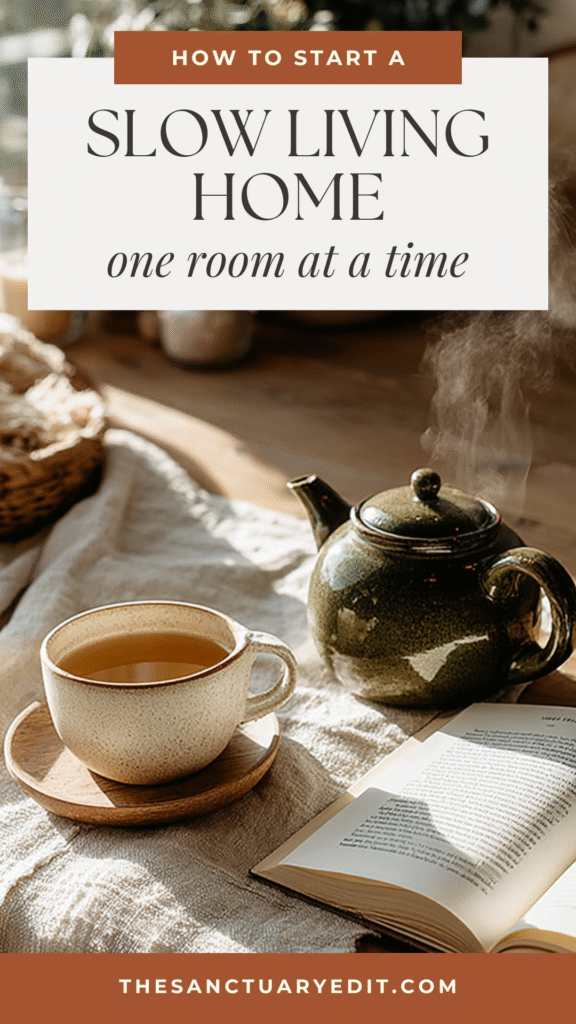
Core Principles of a Slow Living Home
Before you step into specific rooms, it helps to carry a set of guiding ideas that anchor every edit.
Define purpose. Ask yourself what each room is truly for. Is the bedroom a retreat for rest and reflection? Is the kitchen a place for nourishment and connection? When you clarify purpose, it becomes easier to let go of what doesn’t serve it.
Less but better. A slow living home isn’t about adding more. It’s about choosing fewer things with deeper meaning. Natural materials, simple pieces, or something with a story will always hold more weight than an endless collection of items.
Invite nature. Light, plants, wood, linen, and clay all soften the edges of a room. They reconnect you to rhythms outside your door and create a grounded calm.
Create order and margin. Give everything its place and leave breathing space in between. Visual quiet helps your nervous system exhale.
Weave routines. Slow living isn’t just what sits in the room. It’s how you use it. Easeful rhythms like opening curtains each morning, lighting a candle at dusk—carry the atmosphere of the space into your body.
With these principles, every room becomes part of a whole. Now let’s walk through the spaces one at a time.
The Bedroom: Begin With Rest
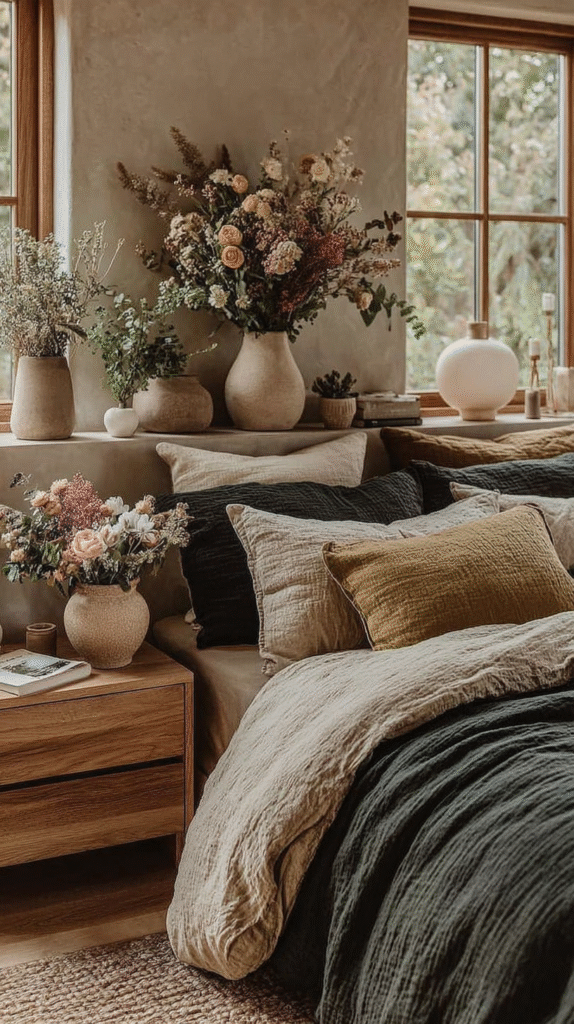
The bedroom is the foundation of a slow home. Rest shapes everything else, and small edits here ripple into your days.
Start with surfaces. Clear the nightstand to hold only a lamp, a book, or a glass of water. This signals to your mind that rest belongs here, not unfinished tasks.
Choose natural bedding like linen, cotton, or wool that feels breathable against the skin. The texture itself becomes part of your slowing down ritual.
Adjust the light. Use soft lamps, candles, or dimmers to tell your body that the day is winding down. Light is one of the simplest but most powerful edits you can make.
This is just the beginning. In time, you may want to explore how furniture placement or color palette influences rest. A deeper dive into the slow bedroom will come later, but these first steps can already reshape the way you enter sleep.
For more ideas on shaping a restful space, you might enjoy this guide to natural bedroom essentials that help you sleep better.
The Living Room: A Place for Connection
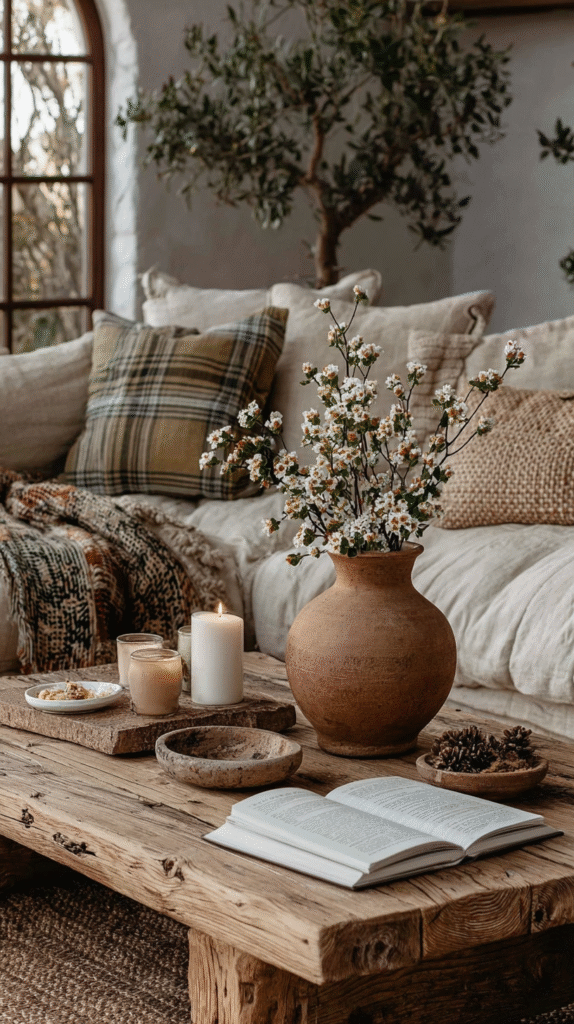
The living room often holds the most clutter and activity. Turning it into a slow living space doesn’t mean stripping it bare. It means curating what fosters connection and calm.
Remove distractions that don’t serve the purpose of this room. Too many decorative items, piles of mail, or unused electronics create a low hum of visual noise.
Anchor the room with a few tactile pieces: a soft throw, a plant that catches the light, a ceramic vase with a branch or flowers. These details bring life without overloading the senses.
Layer textures thoughtfully like linen pillows, a wool rug, woven baskets. Soft materials slow the eye and create warmth.
The goal is not a magazine-perfect living room but one where conversation feels natural and evenings feel restorative. Later, we’ll step into specific ways to create conversation corners and cozy gathering spaces.
If you’re looking for inspiration, here are some easy ways to make your living room feel peaceful and relaxing.
The Kitchen: Nourishment in Simplicity
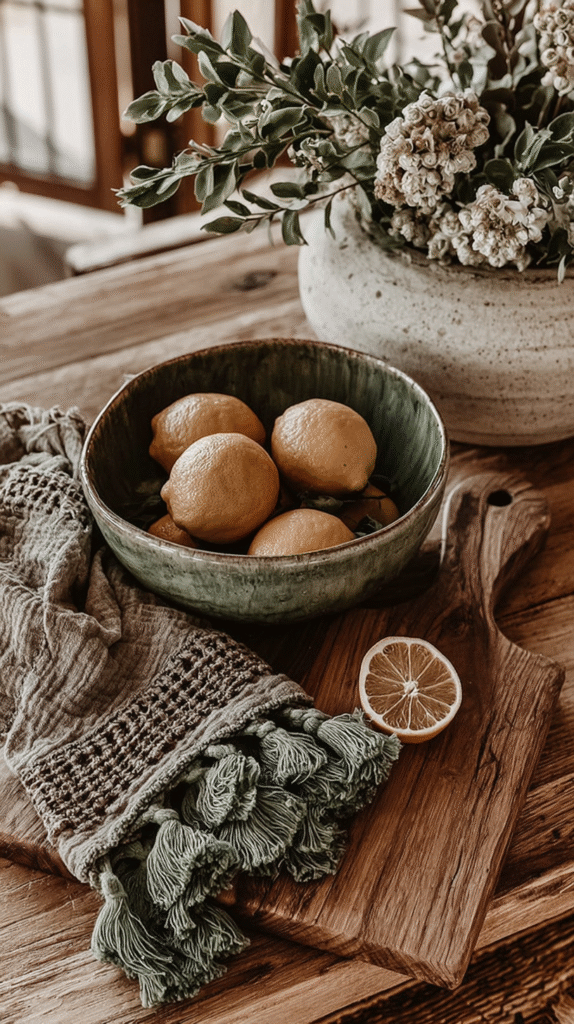
The kitchen is the heartbeat of daily life, yet it’s often where clutter piles up. Starting small can transform its rhythm.
Clear the counters. Keep only what you use daily—perhaps a cutting board, a kettle, or a bowl of fresh fruit. Surfaces with space make cooking feel less like a rush and more like a ritual.
Simplify dishware. Choose a small, meaningful set you reach for again and again. Store or donate extras that add noise instead of ease.
Bring life to the room with something natural: herbs on the windowsill, a bowl of lemons, or a jar of wooden utensils. These quiet accents remind you that cooking is about nourishment, not just efficiency.
A fuller exploration of the slow kitchen will dive into workflow design and mindful cooking rituals. For now, these edits open the space to calmer rhythms.
The Bathroom: Sanctuary in Small Moments
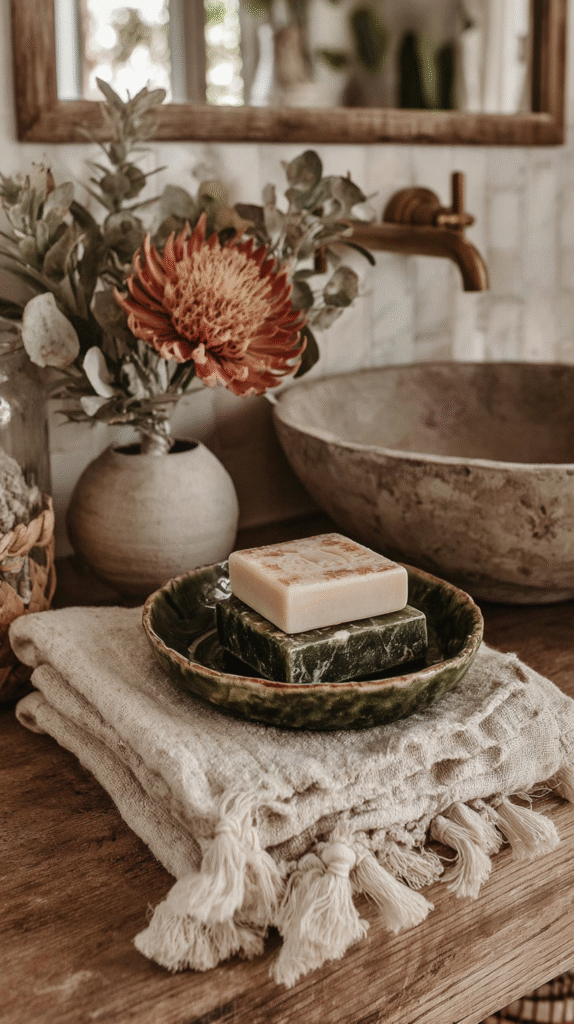
The bathroom is where the day begins and ends, which makes it a natural candidate for slow living.
Edit your products. Keep only what you truly enjoy using. Let the space breathe by storing the rest elsewhere.
Choose towels or washcloths in natural fibers like linen or cotton with a soft hand feel. Daily rituals feel different when wrapped in texture that calms the skin.
Add a gentle sensory element: a sprig of eucalyptus in the shower, a beeswax candle, or a small ceramic dish that holds your favorite soap.
These are small details, but together they create the sense of being cared for. A deeper post on slow bathrooms will explore how to design rituals and color palettes that anchor your mornings and evenings in calm.
You can also explore these spa-like bathroom ideas for everyday self-care to deepen your daily rituals.
The Workspace or Entry: Transitions That Shape Your Day
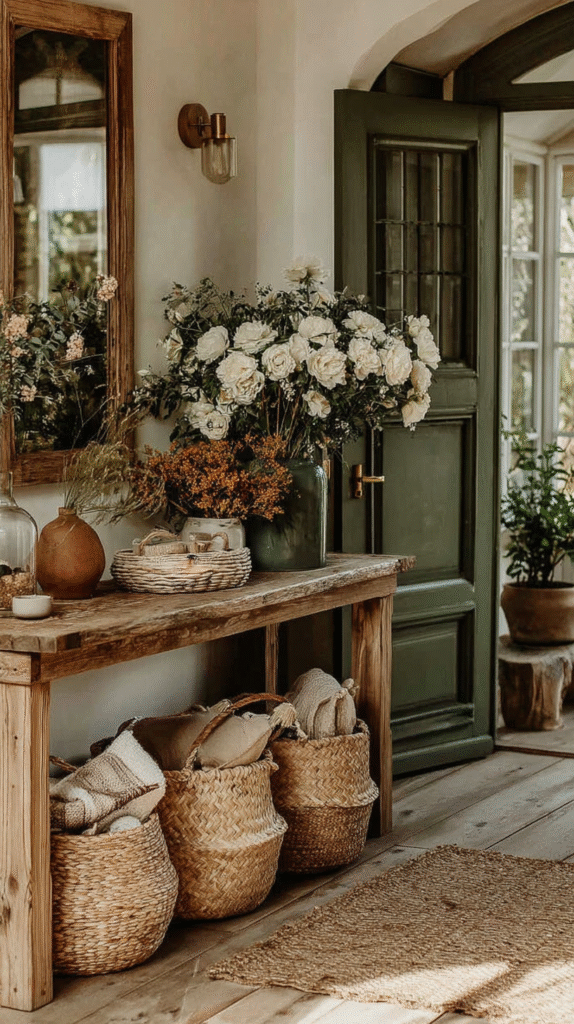
The places where you work or simply pass through, can carry just as much weight as the rooms where you rest.
For a workspace, start by clearing the desk. Keep only what supports your work or creative process. Light, plants, and natural textures soften what can otherwise feel draining.
For an entryway, choose one surface or wall to keep clear. Add a basket for keys, a hook for your coat, and one small object that welcomes you home. These small pauses matter. They shift your state as you enter or leave.
Later, we’ll step deeper into how to make workspaces more sanctuary-like and how entryways can act as grounding thresholds.
How to Keep the Momentum
Choose one room to begin with. The bedroom is often the gentlest starting point, since rest fuels everything else. But if another space feels more urgent like the kitchen or living room, trust that instinct.
Work in small increments. Even an hour can create noticeable change. One corner, one drawer, one surface.
Return often. A slow living home isn’t finished. It’s lived in, refined, softened. Each time you return, you add another layer of intention.
Most importantly, celebrate the small wins. A single vase placed with care, a cleared nightstand, a plant that thrives by the window—all of these are enough to shift how you feel in your space.
Conclusion
Starting a slow living home doesn’t require a grand plan or perfect execution. It begins with the room you’re in, the surfaces you touch, the light that falls across your floor.
Each small edit creates a ripple, and room by room, your home begins to exhale.
As you move through your spaces, bedroom, living room, kitchen, bathroom and workspace, you’ll find the rhythm that fits your life. Over time, the whole home carries the same quiet invitation: to slow down, breathe deeply, and feel at ease in your own sanctuary.


